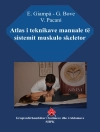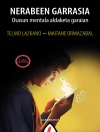Until recently, boys and men provided the template by which problem behaviors in girls and women were measured. With the shift to studying female development and adjustment through female perspectives comes a need for knowledge of trajectories of at-risk girls’ behavior as they mature. Girls at Risk: Swedish Longitudinal Research on Adjustment fills this gap accessibly and compassionately. Its lifespan approach relates the pathologies of adolescence to later outcomes as girls grow up to have relationships, raise families, and take on adult roles in society.
Coverage is balanced between internalizing behaviors, traditionally considered to be more common among females, and externalizing ones, more common among males. The book’s detailed review of findings includes several major longitudinal studies of normative and clinical populations, and the possibility of early maturation as a risk factor for pathology is discussed in depth. Contributors not only emphasize ‘what works’ in intervention and prevention but also identify emerging issues in assessment and treatment. An especially powerful concluding chapter raises serious questions about how individuals in the healing professions perceive their mission, and their clients. Although the studies are from one country—Sweden—the situations, and their potential for successful intervention, transcend national boundaries, including:
• Adolescent and adult implications of pubertal timing.
• Eating disorders and self-esteem.
• Prevention of depressive symptoms.
• Understanding violence in girls with substance problems.
• Lifespan continuity in female aggression and violence.
• A life-course perspective in girls’ criminality.
With insights beyond the beaten path, Girls at Risk provides a wealth of information for researchers, clinicians and related professionals, and graduate students in child and school psychology; psychiatry; education;social work; psychotherapy and counseling; and public health.
Jadual kandungan
Chapter 1. Girls at Risk in their own Right; Anna-Karin Andershed.- Chapter 2. Adolescent and Adult Implications of Girls’ Pubertal Timing; Therése Skoog.- Chapter 3. Eating Disorders and Self-Esteem; Elisabeth Welch, Ata Ghaderi; Chapter 4. Prevention of Depressive Symptoms Among Adolescent Girls; Britt-Marie Treutiger, Lene Lindberg.- Chapter 5. Understanding Violence in Girls With Substance Misuse Problems; Bonamy R. Oliver, Sheilagh Hodgins.- Chapter 6. Life-Span Continuity in Female Aggression and Violence; Anna-Karin Andershed, Debra J. Pepler.- Chapter 7. A Life Course Perspective on Girls’ Criminality; Marie Torstensson Levander, Frida Andersson, Sten Levander.- Chapter 8. What Works For Girls With Conduct Problems?; Pia Enebrink.- Chapter 9. The Trouble With “Troubled Girls”; Margareta Hydén, Carolina Øverlien.
Mengenai Pengarang
Anna-Karin Andershed, Ph.D., is a senior lecturer in psychology at Örebro University, Sweden. Her current research interests are adjustment and socialization processes from a life-span perspective with a special focus on girls and women, the development of antisocial behavior and aggression, structured assessment of risk and protective factors, and interventions, where she combines basic and applied research. She is the PI of two large scale longitudinal projects – the IDA program and the SOFIA study, and has developed an instrument for structured assessment of children with or at risk for normbreaking behavior, ESTER-assessment. She is also currently the Head of the School of Humanities, Education and Social Sciences at Örebro University.












